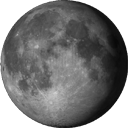Dozens of newborn stars sprouting jets from their dusty cocoons have been spotted in images from NASA’s Spitzer Space Telescope. Image credit: NASA/JPL-Caltech/University of Wisconsin ›
PASADENA, Calif. — New views from NASA’s Spitzer Space Telescope show blooming stars in our Milky Way galaxy’s more barren territories, far from its crowded core.
The images are part of the Galactic Legacy Infrared Mid-Plane Survey Extraordinaire (Glimpse 360) project, which is mapping the celestial topography of our galaxy. The map and a full, 360-degree view of the Milky Way plane will be available later this year. Anyone with a computer may view the Glimpse images and help catalog features.
We live in a spiral collection of stars that is mostly flat, like a vinyl record, but it has a slight warp. Our solar system is located about two-thirds of the way out from the Milky Way’s center, in the Orion Spur, an offshoot of the Perseus spiral arm. Spitzer’s infrared observations are allowing researchers to map the shape of the galaxy and its warp with the most precision yet.
While Spitzer and other telescopes have created mosaics of the galaxy’s plane looking in the direction of its center before, the region behind us, with its sparse stars and dark skies, is less charted.
“We sometimes call this flyover country,” said Barbara Whitney, an astronomer from the University of Wisconsin at Madison who uses Spitzer to study young stars. “We are finding all sorts of new star formation in the lesser-known areas at the outer edges of the galaxy.”
via NASA – NASA’S Spitzer Sees Milky Way’s Blooming Countryside.




